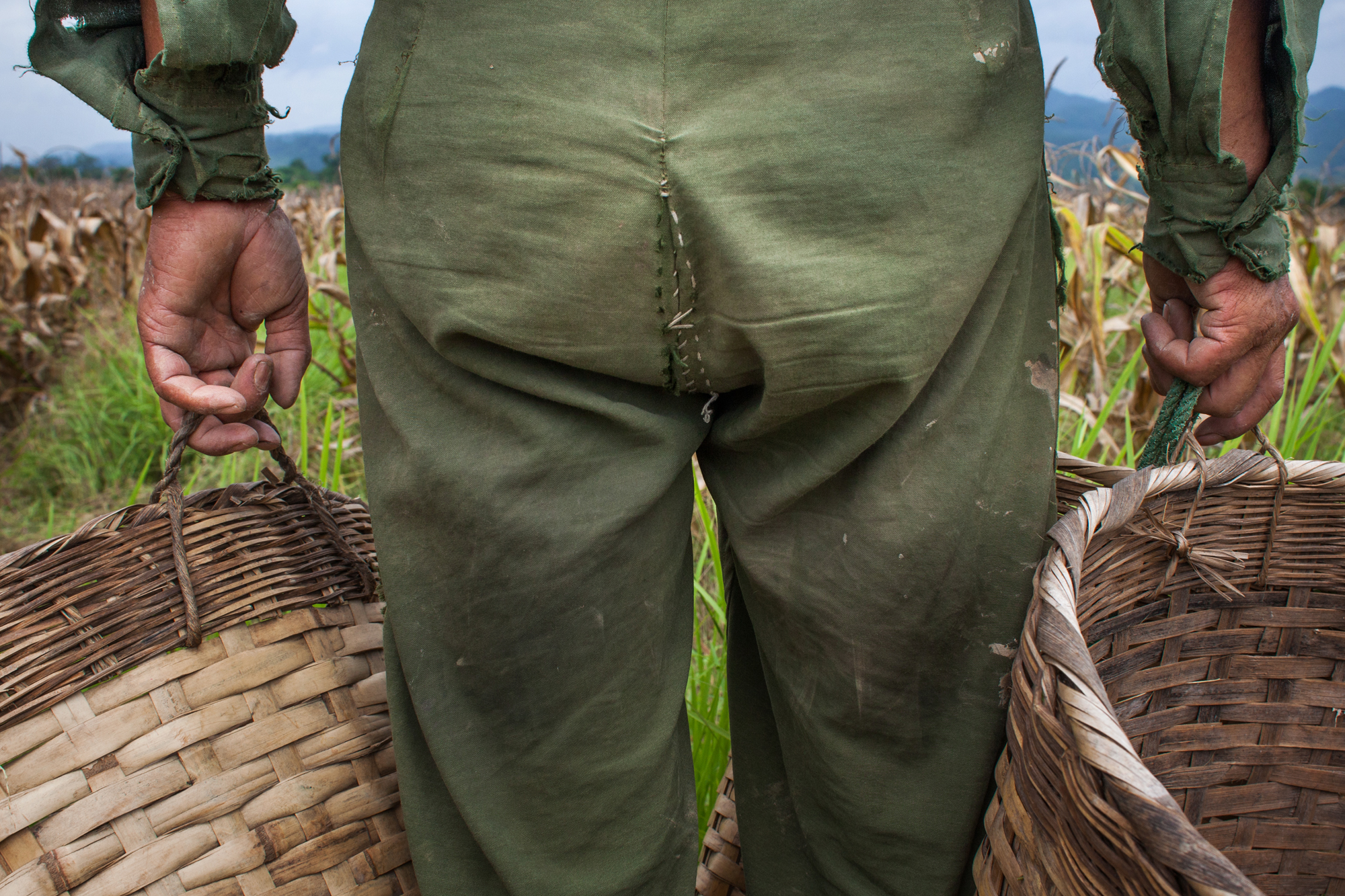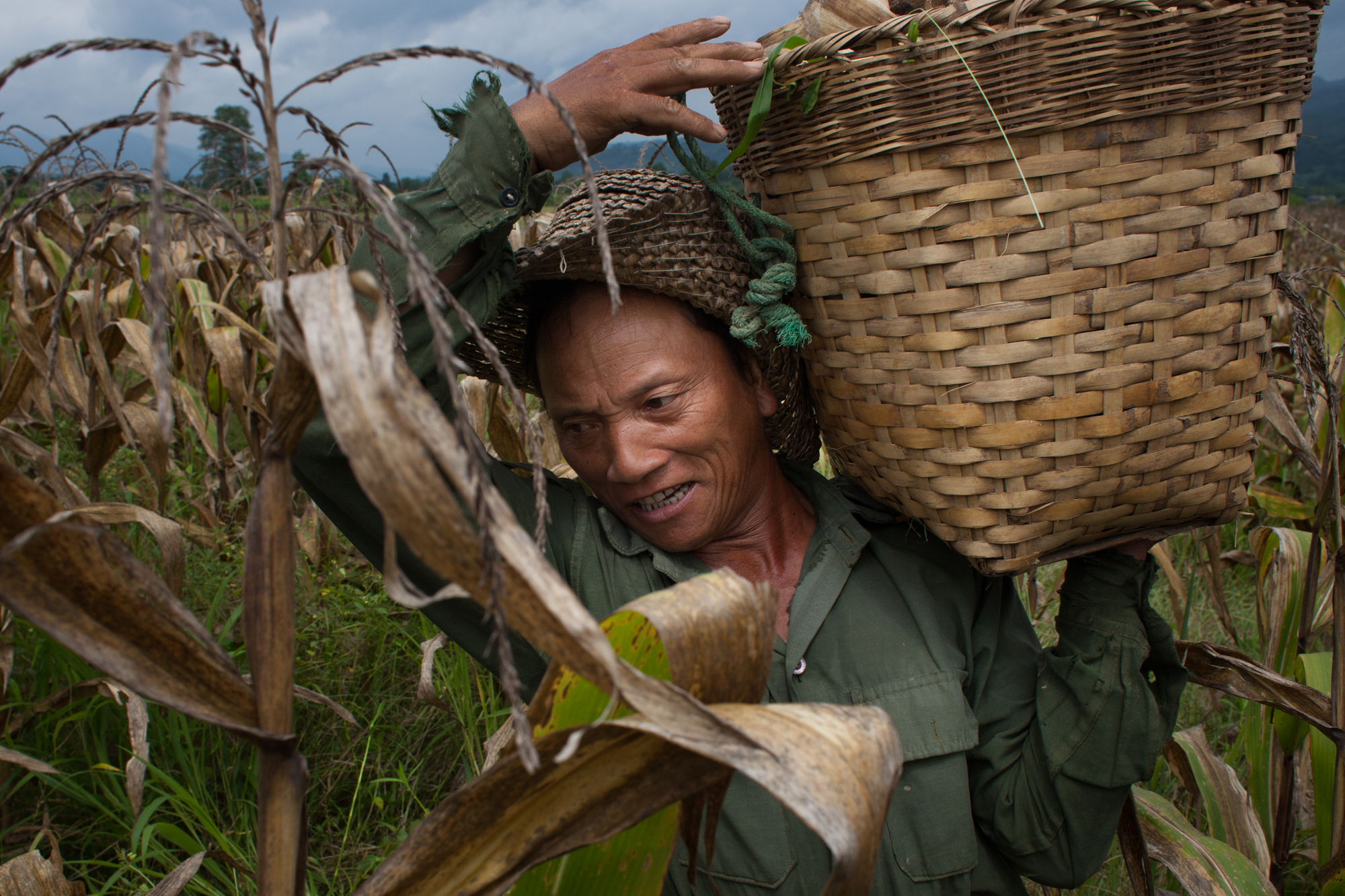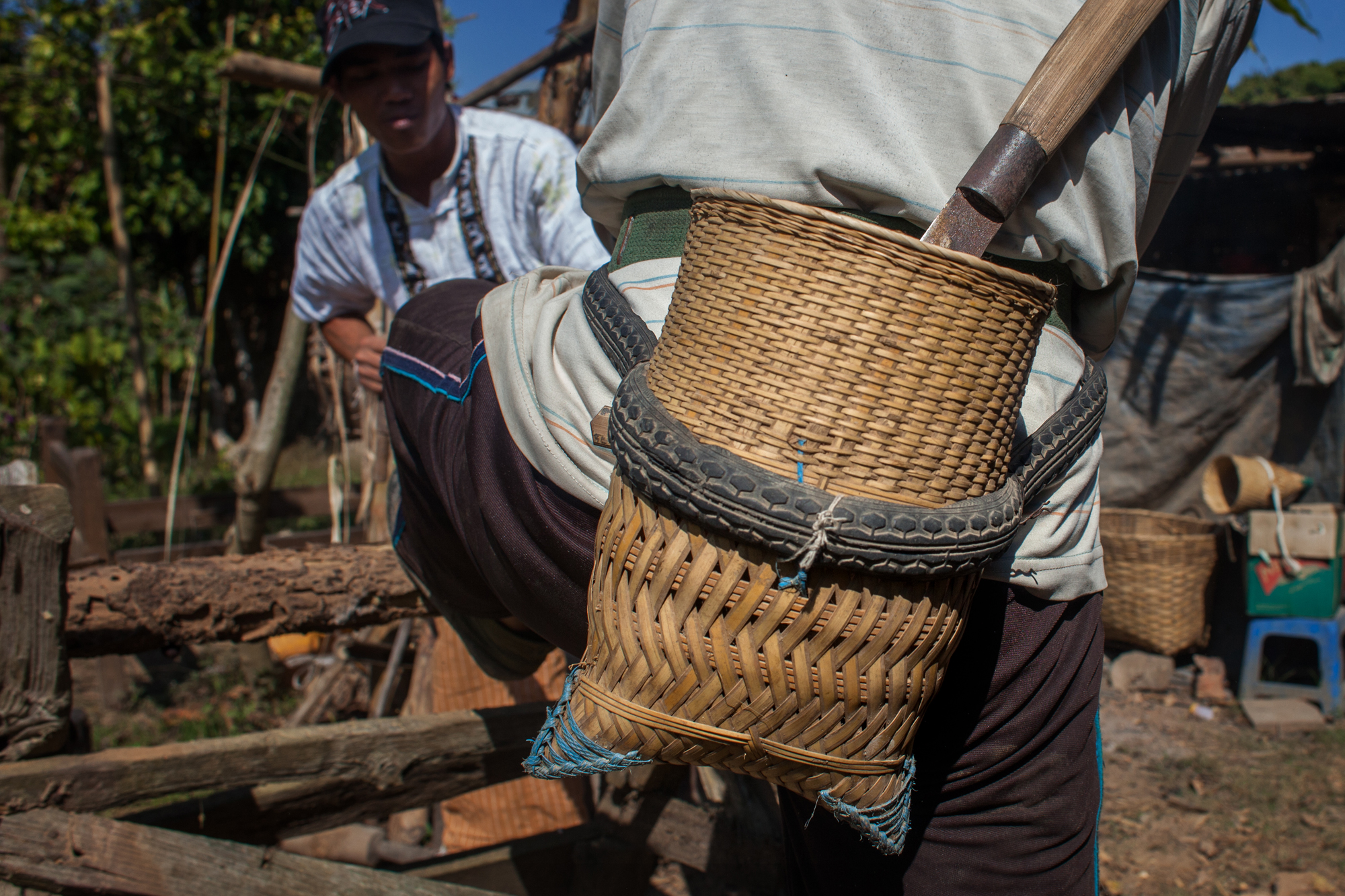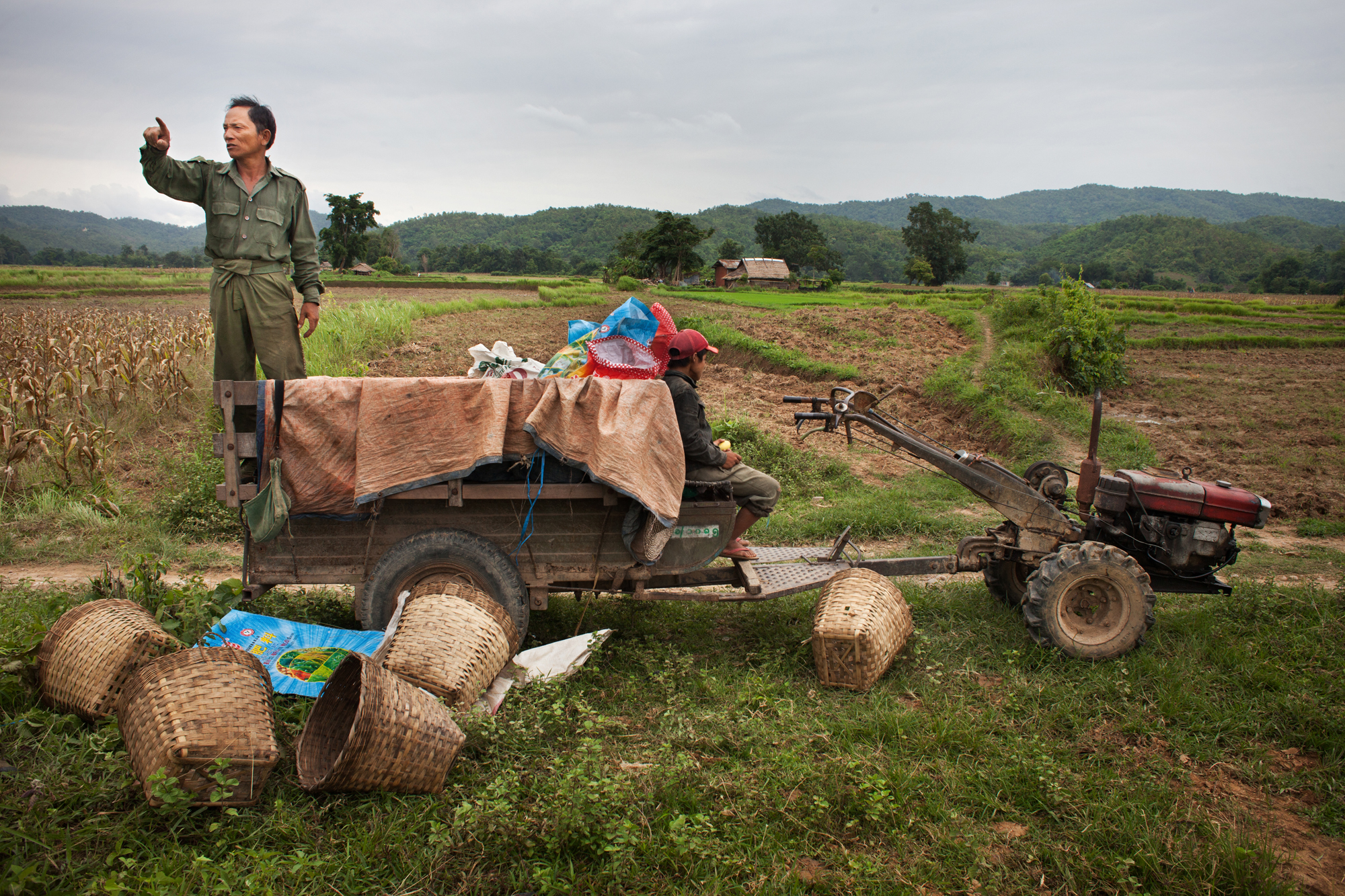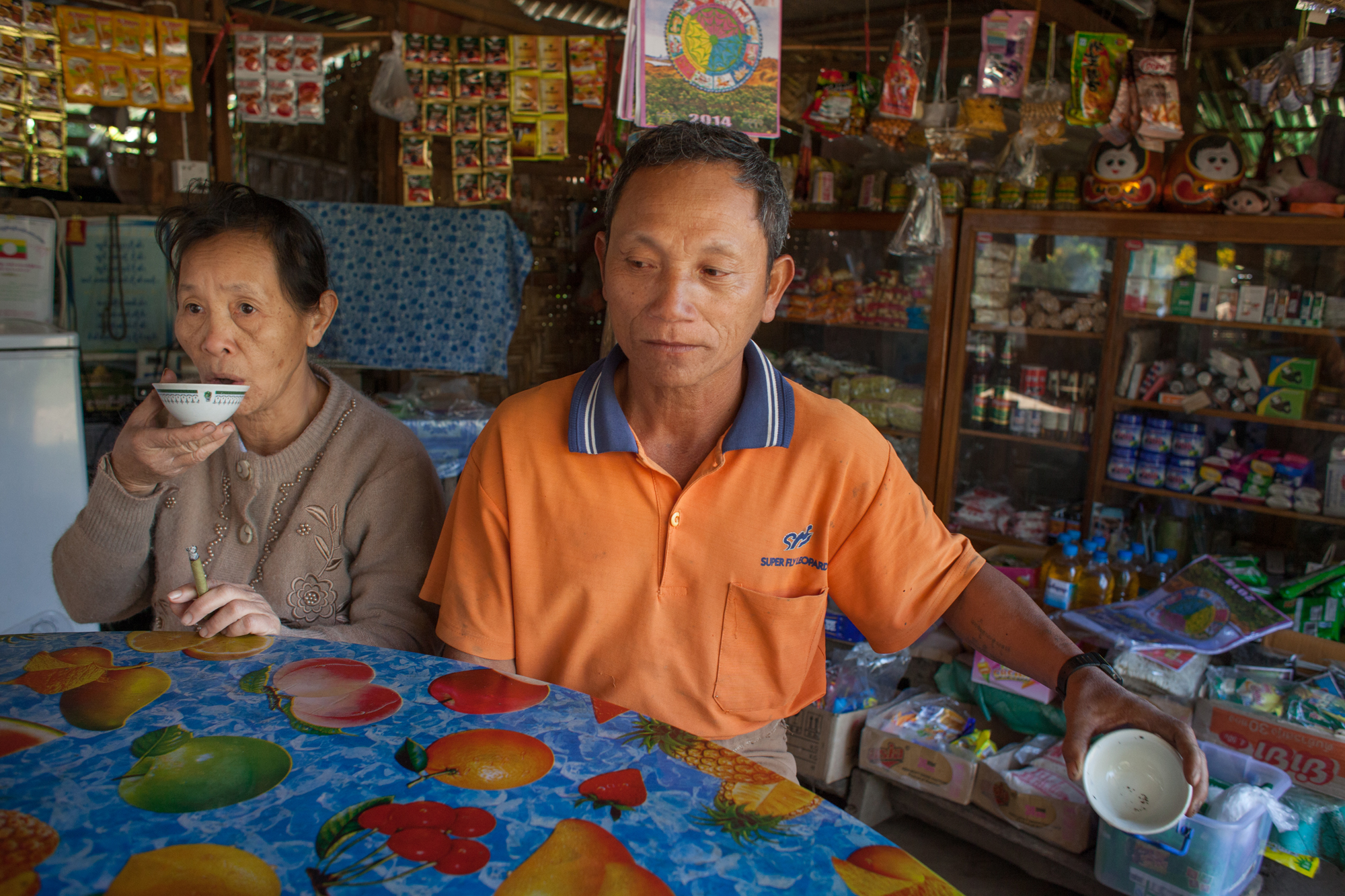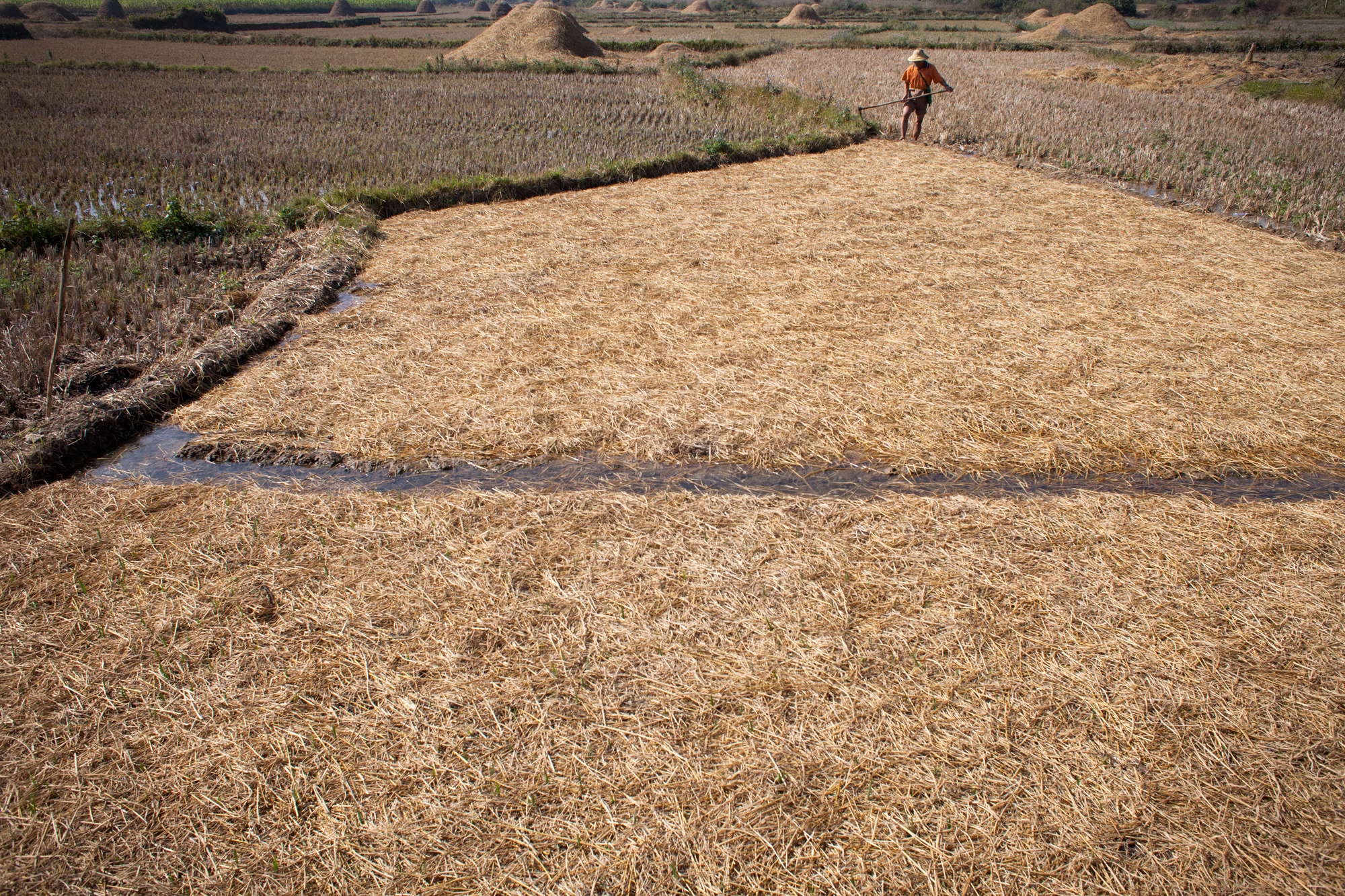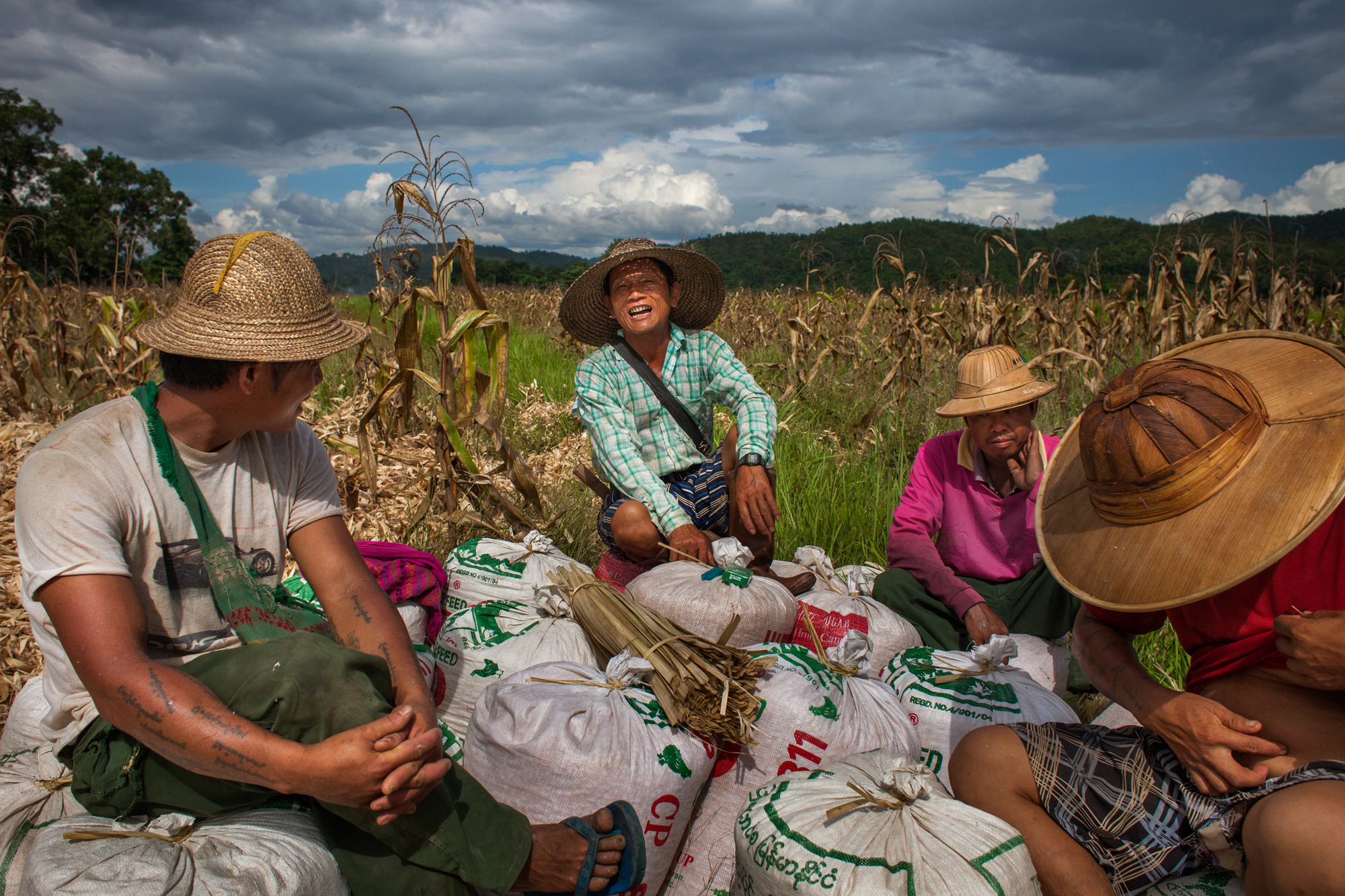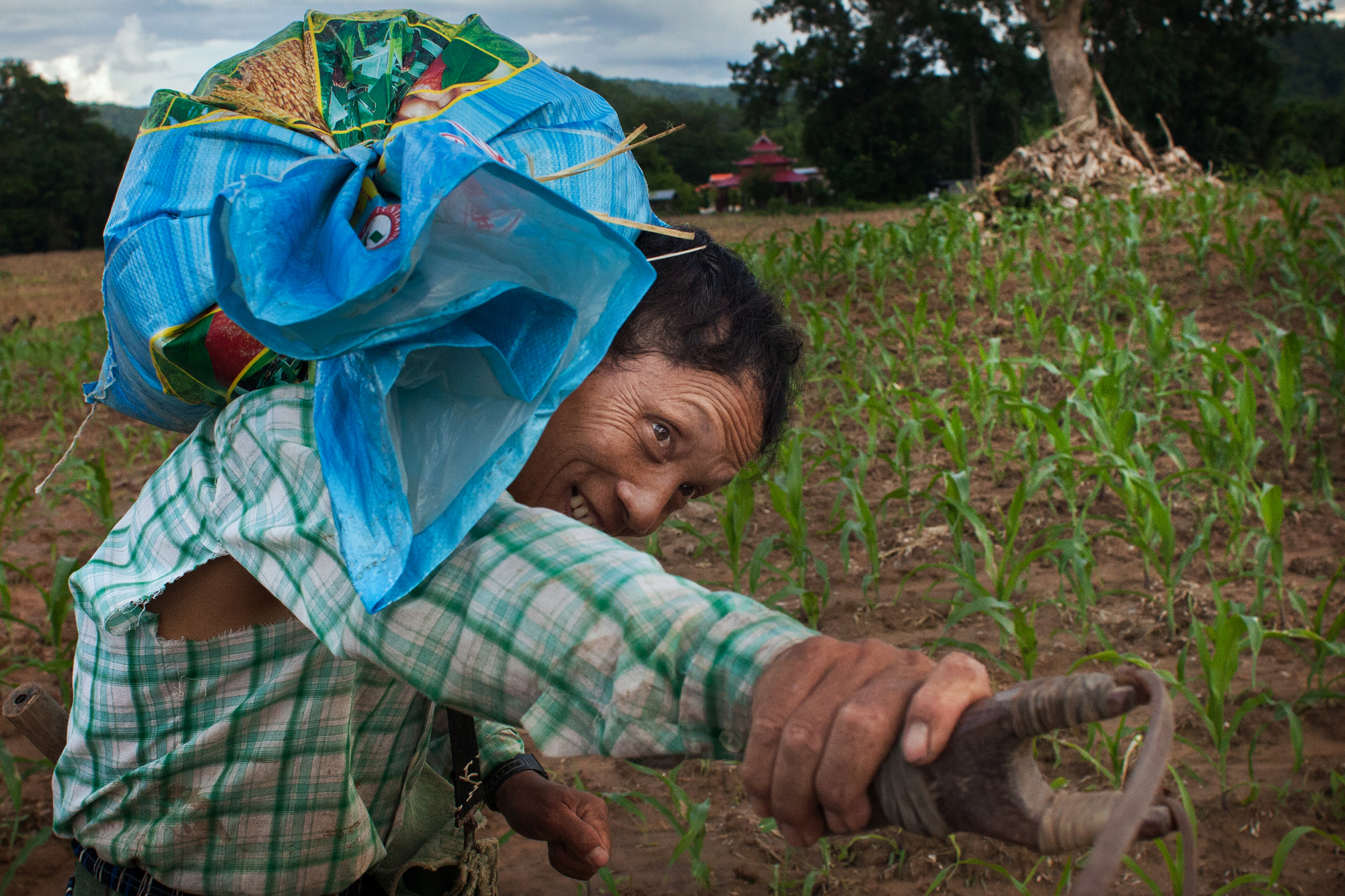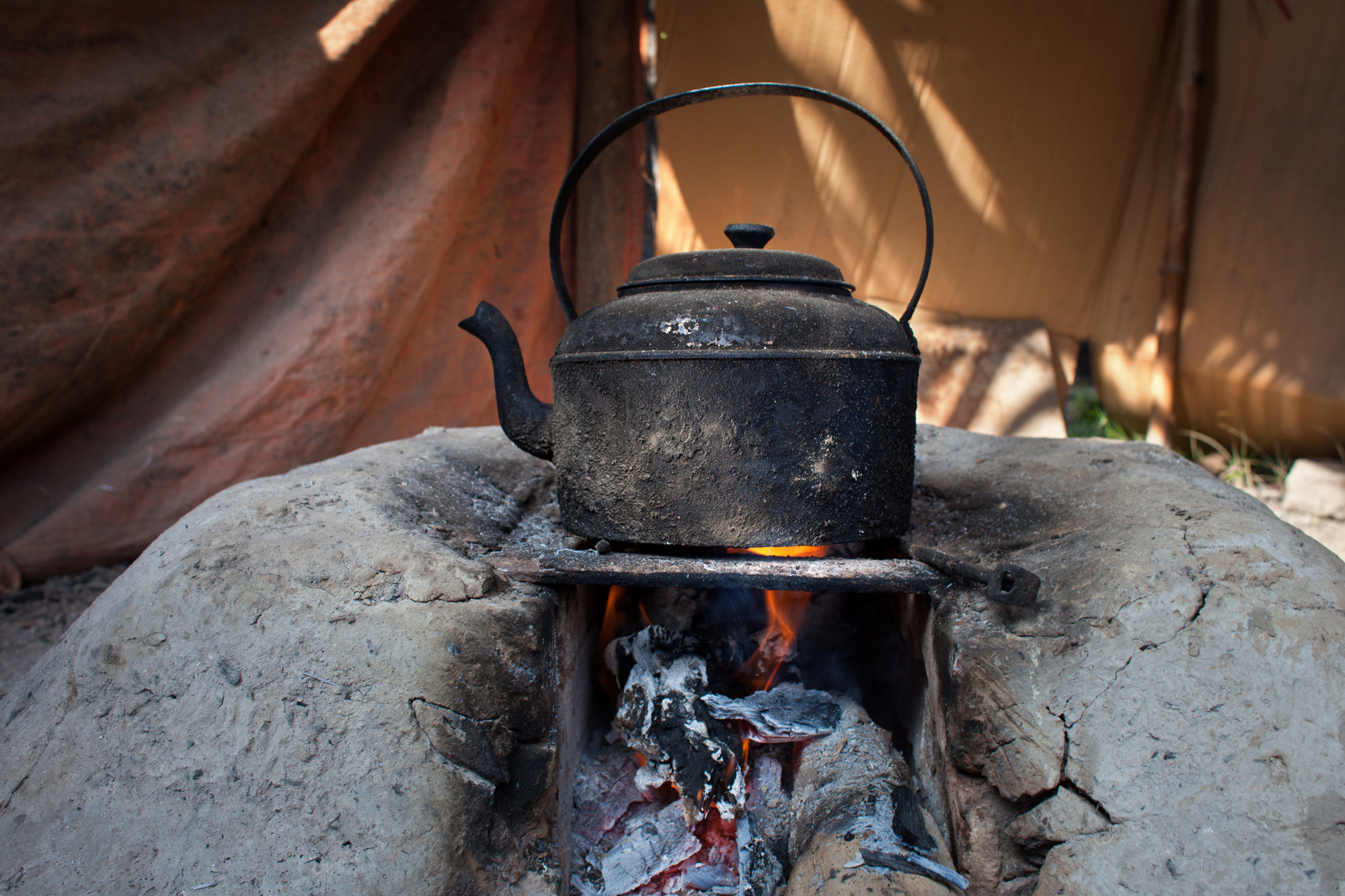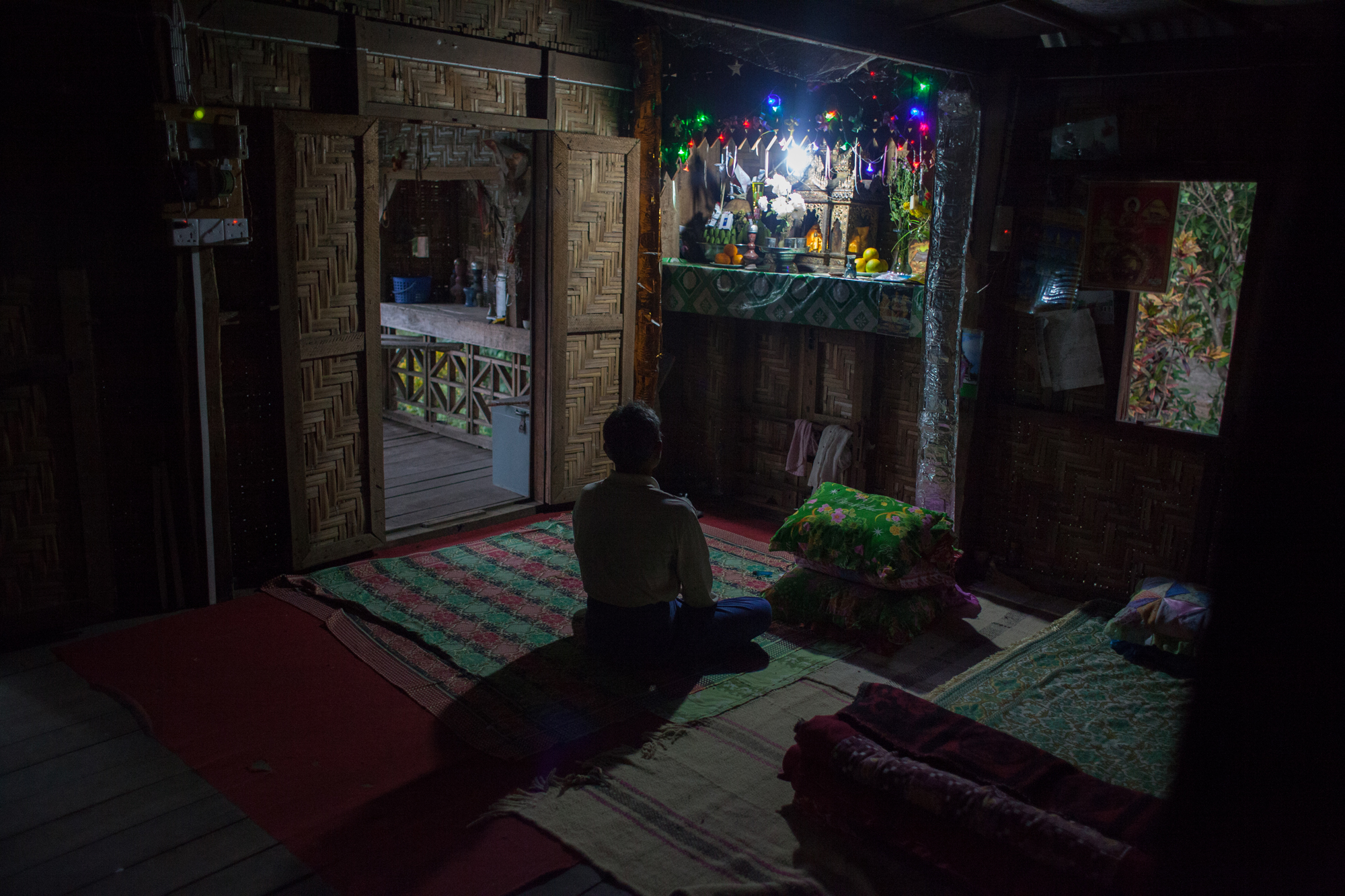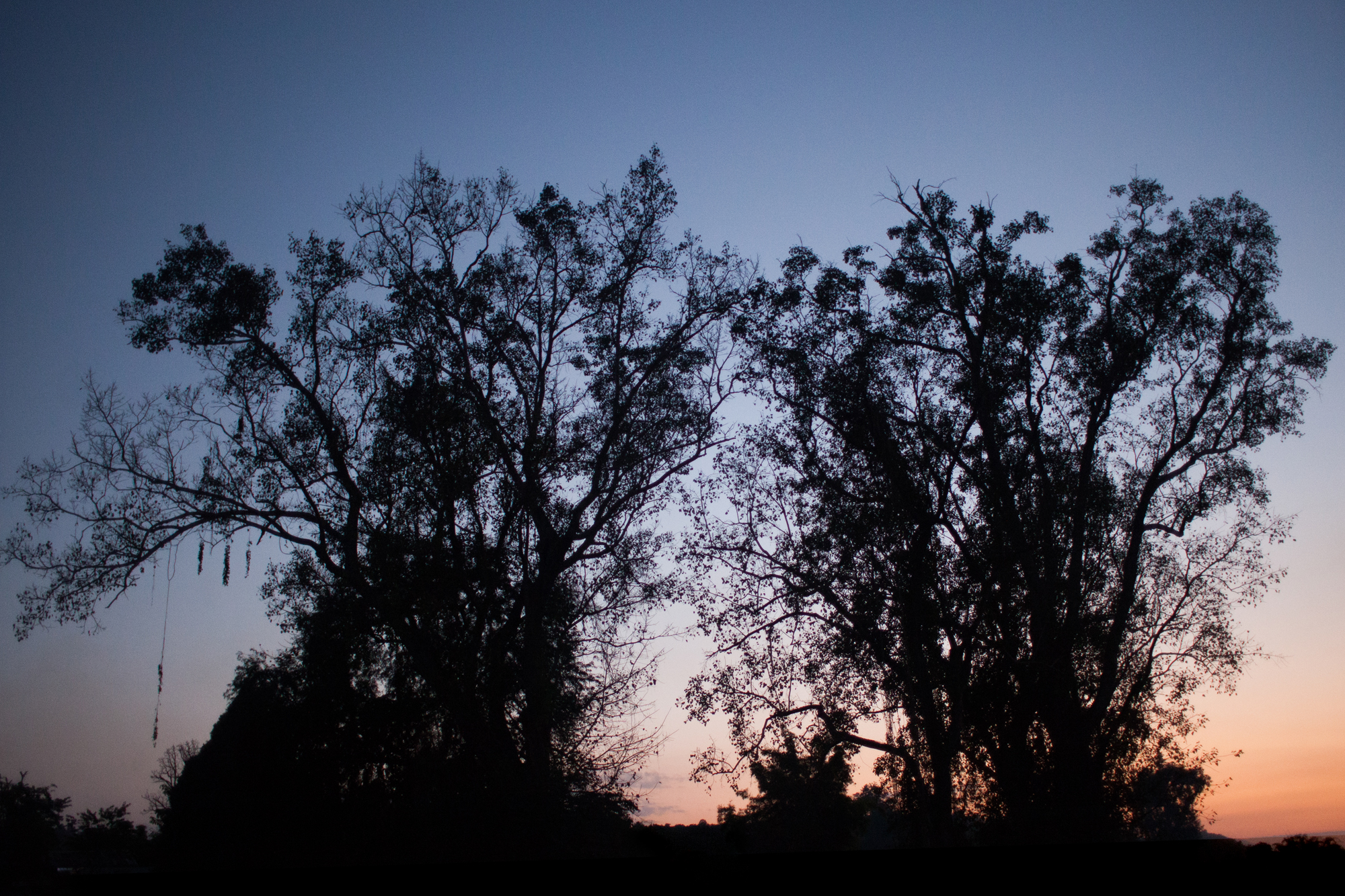A Funeral on the Farm
A Funeral on the Farm
Whatever happens, Sai Un keeps smiling
At the mercy of the weather, the markets and the government, Myanmar’s farmers help each other to get by. No matter what happens, Sai Un keeps smiling.
The rain that flooded the rest of the country only made the corn in the Shan hills grow taller. Sai Un is hard at work, but not in his fields. His 101-year-old father-in-law has just died. While other farmers scramble to harvest corn before they plant rice, Sai Un, his wife and two daughters have spent the week preparing a feast. Sai Un’s father-in-law, U Ba Aye, began farming when Myanmar was known as the rice bowl of Asia (See: Rice Bowl of Asia). Now Sai Un, 52, is sending the old one off in style.
The agriculture sector that employ almost two-thirds of Myanmar workers depends almost entirely on small-holder farmers such as Sai Un, who has three acres (1.2 hectares) and six water buffaloes. Myanmar was the world’s leading rice exporter in the 1930s and 40s, and the agricultural sector is finally recovering from half century of isolation, tyranny and stunted development. Official figures show that Myanmar produces 12.5 million tonnes of rice a year and is the world’s fifth biggest exporter of the cereal. Production of other crops, such as corn and soybeans is also on the rise, though Myanmar has long been a leading exporter of beans and pulses.
The mourners have gathered at Sai Un’s family farm on the Dokehtawady River in Hsipaw Township. The villagers raised money for an enormous pig, and the guests swap yarns and memories over bowls of pork and sticky rice under colourful tents erected in Sai Un’s yard. A focal point at the rites is a white and gold tun tan lu, a frame made of strips of bamboo decked with money, food, cooking utensils and other offerings for the monks who will pray over the dead man as he enters the afterlife.
“You know he was related to Prince Kya Sang?” an elderly guest declares, green cheroot gripped between his remaining teeth. “He was his nephew,” laughs Sai Un, who has forgone his muddy field longyi for a clean white shirt, though the straw hat remains. He gets up to greet funeral guests at another table, and the elderly farmer fires up another cheroot. “It has been an excellent year,” he says. The season was wet enough to plant corn instead of soy, which usually yields double the return for farms near the river. And the flooding elsewhere is sending rice prices through the roof. “I only feel bad for the farmers in lower Myanmar whose crops have been destroyed,” the old man continues.
Almost all of the rice grown in Myanmar is for domestic consumption. Last year the country exported only 1.6 million tonnes of the 12.5 million tonnes it produced, which was cultivated on about half of its arable land. Most of this land is south of the temperate Shan hills in the Ayeyarwady Delta, where fickle weather can spoil one or both of the two crops usually grown each year. The massive flooding in the delta in 2015 and in other major rice-growing areas is certain to affect the harvest and Myanmar’s place in the global market. A few bad years and concern about export performance will be replaced by worry about shortages of the country’s most important staple.
“Many farmers are at the mercy of the markets and the weather”
“Farmers are very vulnerable,” says U Chit Khine, chairman of the Myanmar Rice Federation, an industry advocacy and development group in Yangon. “For the time being there is no safety net for them.” During the last few decades, Myanmar has gradually recovered from the failed economic engineering of the socialist period, helped by the introduction of a free market policy in 2004. Gone is the price fixing, prescriptions and brutal quotas that all but destroyed the industry. Yet with basically no government involvement in the sector, many small-holder farmers are at the mercy of the markets and the weather.
“Most challenges now are related to working capital,” U Chit Khine says. “But there is also a serious need for new technology, storage, infrastructure and expertise.” Last year the government enacted the Farmers’ Protection and Empowerment Law, which subsidies farmers and offers financial safeguards but the law is yet to be implemented. The Myanmar Agriculture Development Bank offers credit to small-holder farmers and industry groups such as the Myanmar Rice Federation, and a growing number of non-government organisations, are working to provide microfinance loans and technological assistance, but it may not be enough. “They need to be given subsidies if they’re to compete with other ASEAN countries,” said U Chit Khine.
Sai Un paid cash for the diesel-powered “iron buffalo” that ploughs his fields alongside his traditional grass-fed ones. The family covers their living expenses with a small sundry shop and a few sacks of rice saved from each harvest. The income from the crops they either save or invest in new equipment, fertiliser and imported seeds. Two years ago Sai Un installed power in his home and bought a cell phone.
Sai Un’s iron buffalo is resting during the funeral, but the mechanical cultivator of his neighbour is working overtime. If his neighbour can get his rice planted early he can expect the best prices he’s ever received. The neighbour and some day labourers are rushing to pluck rice seedlings from a nursery plot while a group of women, knee-deep in mud, plant them in nearby paddy fields. A shortage of casual day labour is becoming a big problem for rice growers during the planting and harvest seasons. The casual labour rate has risen to about 5 dollar a day as unskilled workers abandon long days of backbreaking toil in the fields for the lure of manufacturing jobs in the cities.
One of the men stops. There aren’t enough work gloves to go around and bundling the sprouts is rubbing his fingers raw. The man says he makes a living as a carpenter, but does farm work for extra cash. Some people in Hsipaw survive on seasonal labour, he says, but many have left for Mandalay. Even many landowners are following suit, says U Chit Khine. In lieu of government incentives or financial safeguards, simply trying their luck in the expanding manufacturing and industrial sector is becoming an ever more enticing option for small-holder farmers. If you’re going to be poor, you might as well do it in the shade.
Thick, dark clouds are rolling in. At the farmhouse, the monks have finished their funeral chants. As the young men dismantle the tents and tables, a few old-timers lounge on Sai Un’s porch to smoke cigarettes. Sai Un’s wife, Pa Mat, brings tea and seizes a chance to sit down. “I was sad at first, but then I was too busy to feel sad,” she says, her eyes still red from weeping. Her father was one of the most prosperous farmers in Hsipaw. He hired Sai Un as a field hand after the young man’s father sold his land for cash after his wife left him. “Sai Un turned out to be a simple, honest, and hardworking man,” Pa Mat says. “He was clever, smiled a lot and told jokes.” She gradually fell in love with him during their years working together in the fields.
“They would tell us what to grow and if we didn’t grow enough, they would take our land.”
Sai Un just smiles and shrugs. “She had to have someone to rely on.” Those were the best times of the worst years. After the military seized power in 1988 and crushed a national uprising, the Shan civil war was a distant dread, but the government was a daily peril. “We had to sell to the government at their price. It was about half what the crops were worth, but we couldn’t argue,” says U Myat Thein, one of the farmers on Sai Un’s porch. “And if we didn’t sell, they would take our land and give it to another farmer. They would tell us what to grow and if we didn’t grow enough, they would take our land.”
The district officials were just as bad. They would send henchmen to collect contrived taxes or blatant bribes. The farmers were also at the mercy of corrupt doctors who would demand triple or quadruple the prices for treatment and medicines. With no one looking out for farmers, they looked out for themselves. They loaned to those who fell short of government quotas and pooled their meagre earnings to help out when someone had a medical emergency.
Sai Un speaks up. “Before the government could do whatever they wanted, but now we can report them to the township officer, or one of the party offices. Only a few years ago there was a corrupt doctor demanding too much for services, but he was fired.” Local governments and party offices are offering political leverage for farmers, yet the scars are slow to heal. Regardless of subsidies and modernisation, U Chit Khine says one of the greatest challenges for the government has been resolving long-standing land ownership disputes. Sai Un remains wary. “The government can never do as they did before, but we still never believe them,” he says. “We didn’t even need to vote in the last election, because everyone knew who would win.”
The civil war that still rages on in the Shan hills, does not worry the farmers. “We don’t care if they’re fighting or not,” Sai Un says. “We do our own job, they do theirs.” However, Sai Un and his fellow farmers long for a strong Shan leader who can represent them in the emerging democracy – or protect them when their interests are threatened.
“We help each other any way we can. We have to.”
The village, which has about 80 households, serves as its own insurance. “If someone needs a machine, we all pitch in and loan him the money for it. If he needs a buffalo, we give one,” Sai Un says. Villagers help one another with medical expenses, disaster relief and even combine aid and microfinance credit from NGO’s. Like many other villages far from the big cities, it is a community forged by a century of foreign rulers, civil wars, coups, counter-coups, isolation and tyranny, and the single thing farmers can trust. “We help each other any way we can,” Sai Un says. “We have to.”
The day after the funeral will be Sai Un’s first as the oldest man on the farm, and he, Pa Mat, their daughters, sons-in-law and a handful of hired workers will head back to the fields to pick, plough, chop, dig and plant as fast as they can. “We won’t even have time to dream at night, only sleep,” Sai Un says with a big grin on his face. There will be a few relaxed months of growing, then the harvest followed by more planting. It hasn’t always been easy, but is the only life Sai Un has known, and it probably will be the one he leaves for his own sons-in-law when he joins old U Ba Aye one day. For now at least in Hsipaw, life is good.
Rice Bowl of Asia
Myanmar developed into the rice bowl of Asia in the early 1900s, largely thanks to the British colonisers. Burma was blessed fertile soil, favorable weather and human resources with centuries of generational knowledge, but the introduction by the British of new technology and infrastructure resulted in huge increases in the rice harvest, especially in the Ayeyarwady Delta. At its height, Myanmar was exporting about 3 million tonnes of rice each year, more than any other country. Unfortunately, the prosperity did not always extend to the farmers, who often found themselves deep in debt to loan sharks, forced to hand over their livestock, harvests and even daughters to keep their ancestral lands.
The rice industry held up fairly well between Myanmar’s independence in 1948 and General Ne Win’s coup d'état in 1962. The military dictatorship imposed prescriptions on what farmers grew and seized their lands when they couldn’t meet the brutal quotas. The army began to loosen its grip after the 1988 uprising and subsequent power shift. The army adopted an official policy of non-interference in 2004, and ten years later parliament passed the Farmers Protection and Empowerment Law to help develop and modernise the agricultural sector. However, the government still struggles to settle old land disputes and heal scars from 50 years of tyranny.

